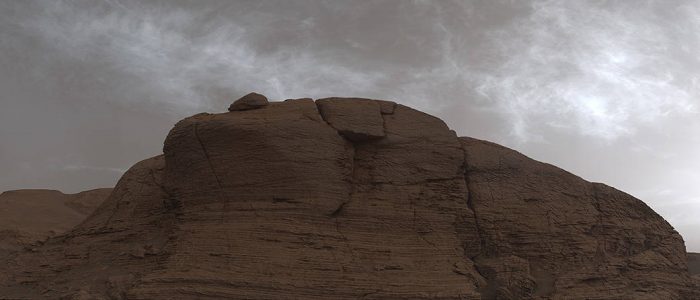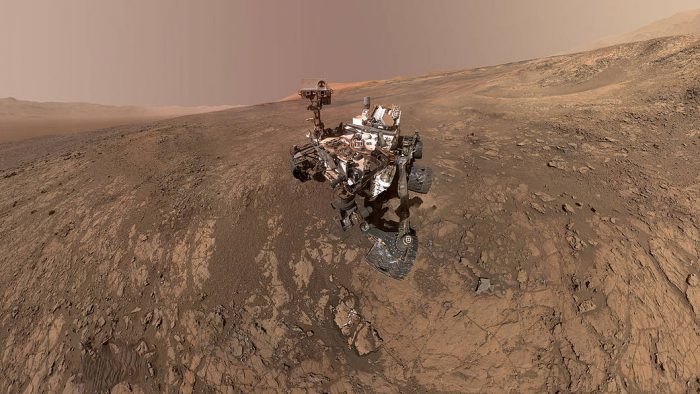We’re always curious about Mars! Good thing we have NASA’s Curiosity rover to deliver us some awesome new Martian content. It never fails to leave us in awe of our neighbouring planet.
As we’ve written in the past, Curiosity first landed inside the enormous Gale Crater (believed to once have been an ancient lake) in 2012. Its mission is to explore the environment and collect rock samples, all in an effort to learn more about the planet’s ancient past—and even determine if the Red Planet could have once supported microbial life.
Even though the walls of the Gale crater are so steep that the rover will never be able to leave it, there is still a huge area for the rover to explore. Including the great Mount Sharp, an enormous mountain located in the basin of the crater, where Curiosity is currently rover-ing around. Since landing 9 years ago, Curiosity has driven over 25 kilometres (15.5 miles) and ascended over 450 metres (1500 feet) from its landing site.
Take a 'peak'
Ever wondered what views you’d see on a hike up a martian mountain? Well, look no further than this new panorama captured by the rover’s Mast Camera (or MastCam for short) on July 3, 2021. Made up of 129 individual pictures that were sent to Earth, then stitched together by NASA scientists, this panorama highlights some impressive geographic features as it climbs the side of Mount Sharp.
Check out this video exploring the panorama's 360 view here:
The video showcases a landscape that is both alien and familiar—it looks kind of like a rocky desert you might find on earth, but with a total lack of vegetation. We also see pits of martian “sand” that’s made of bits of volcanic rock, knobbly rocks created by groundwater, and rounded ridges. Pretty mind-blowing stuff!
Mars rocks!

A rare cloudy day on Mars, as seen by Curiosity. This rover is constantly giving researchers amazing insights into the world of Mars. (NASA/JPL-Caltech/MSSS)
Curiosity has spent the last several years investigating clay-rich rocks that form in lakes, but now the rover moving into a different never-before-seen region on the mountain. This location is dominated by salty minerals called sulphates.
What does this tell us? Well, we know that sulphates form in drier conditions. So scientists think this area might show us how the ancient martian climate was changing over time. By studying the mountain’s rocky layers, we can get a better sense of how this possibly once-wet planet changed into the dry Mars of today.
Curiosity’s mission is far from over, and there is much more to discover as it moves along its winding path. Onwards up Mount Sharp!
 Nine years into its missions, Curiosity is still going strong. (NASA/JPL-Caltech/MSSS)
Nine years into its missions, Curiosity is still going strong. (NASA/JPL-Caltech/MSSS)









